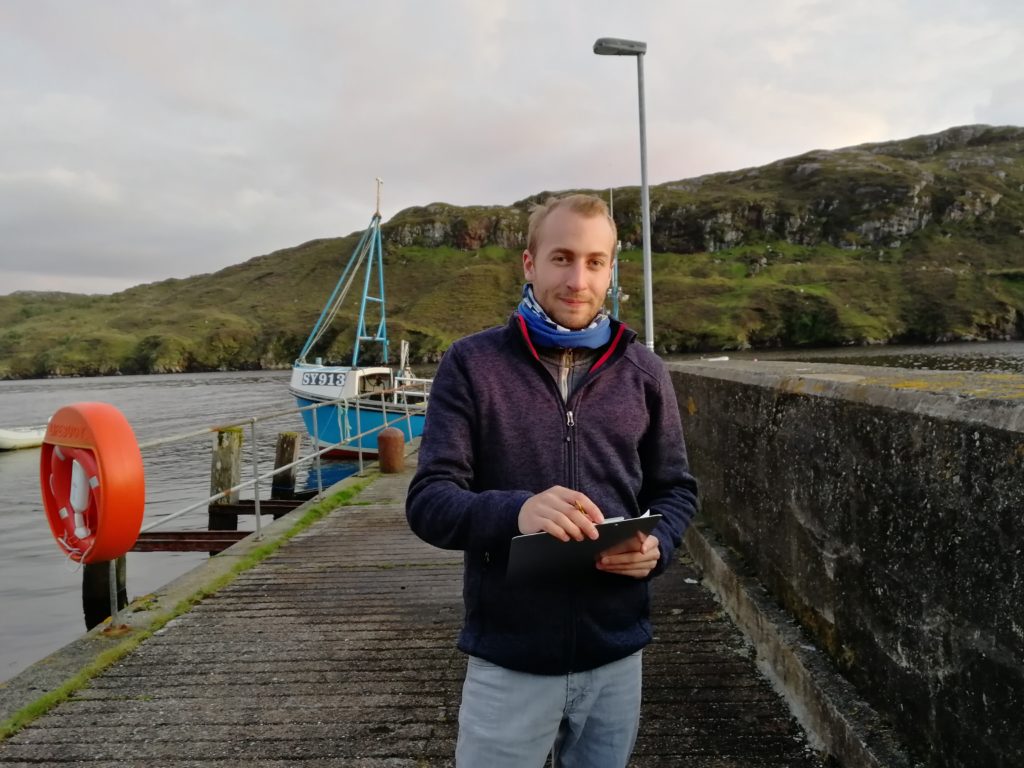
| Academic Year | 2020-2021 |
| a.kuech.20@abdn.ac.uk | |
| Institution | University of Aberdeen |
Biography
School: School of Biological Sciences
Project: Is macroalgal carbon sequestration the ’elephant in the Blue Carbon room’?
Supervisors: Professor Ursula Witte and Dr Kieran O’Driscoll
Undergraduate Education: BSc (Hons) Marine Biology, University of Aberdeen
Postgraduate Education: N/A
Research: The term ‘Blue Carbon’ describes the long-term carbon storage by coastal ecosystems, mostly mangroves, salt marshes and seagrasses. Macroalgae, such as kelp, are often overlooked as Blue Carbon habitats given that they grow on hard rocky substrates, preventing the accumulation of carbon over time. With studies estimating that around 80% of macroalgal carbon is transported to the deep-sea habitat, macroalgae have the potential of representing a significant contribution to Blue Carbon.
My research will focus on quantifying the contribution of macroalgae to benthic community support and long-term carbon sequestration.
A combination of Remotely Operated Vehicle (ROV) imaging, multiple coring, stable isotope analysis and isotope tracing experiments will be performed to answer the following questions:
- How much macroalgal biomass is transported to the deep-sea ecosystem?
- Of the transported macroalgal carbon how much is
a. stored long-term (i.e. sequestered)?
b. utilized as a food source for the benthic community?
To understand macroalgal carbon contributions to the deep-sea benthos, I will be at the forefront of developing novel isotope tracing experiments. Therefore, selected macroalgal species (e.g. the common brown kelp – Laminaria digitata) will be cultivated in the Alfred Wegener Institute for Polar and Marine Research algal culture facilities (Bremerhaven, Germany). Supplementary ROV imaging will be used to quantify macroalgal detritus arriving at the seafloor. Moreover, sample collection will be based on sediment retrieval by multiple corers.
The experimental work is expected to be conducted aboard a series of research expeditions to the Kongsfjorden inlet, Spitzbergen. The Arctic fjord system of Kongsfjorden is of particular interest attributed to a rapid sea ice extent decline in the last decade and subsequent macroalgal expansion, therefore representing an ideal area for investigating future macroalgal Blue Carbon estimates. Berths on the 2021 RV Oceania expedition to Kongsfjorden have already been secured, with additional regional work in Scottish fjords on the west coast planned.
Apart from the scientific advancements in the field of Blue Carbon science envisaged for my project, there is ample opportunity for developing pathways to impact both locally and internationally. Given the direct relevance to climate change mitigation and ocean management in a world of rising atmospheric CO2 levels, translating findings into policy-making is expected to be simplified by cooperation with the Scottish Government’s Scottish Blue Carbon Forum. Results could also be extrapolated to quantify and correct current Blue Carbon estimates, further improving climate change mitigation advancements.
Additional partner research institutions include the Alfred Wegener Institute for Polar and Marine Research (AWI) and the Institute of Oceanology of the Polish Academy of Sciences (IOPAN).
Relevant articles:
- Macreadie PI et al. (2019). The future of Blue Carbon science. Nature communications. DOI: 10.1038/s41467-019-11693-w
- Krause-Jensen D. et al. (2018). Sequestration of macroalgal carbon: The elephant in the Blue Carbon room. Biology Letters. DOI: 14. 20180236. 10.1098/rsbl.2018.0236.
- Smeaton C et al. (2017). Scotland’s forgotten carbon: a national assessment of mid-latitude fjord sedimentary carbon stocks. Biogeosciences, 14, 5663-5674. DOI: 10.5194/bg-14-5663-2017
Other:





















































